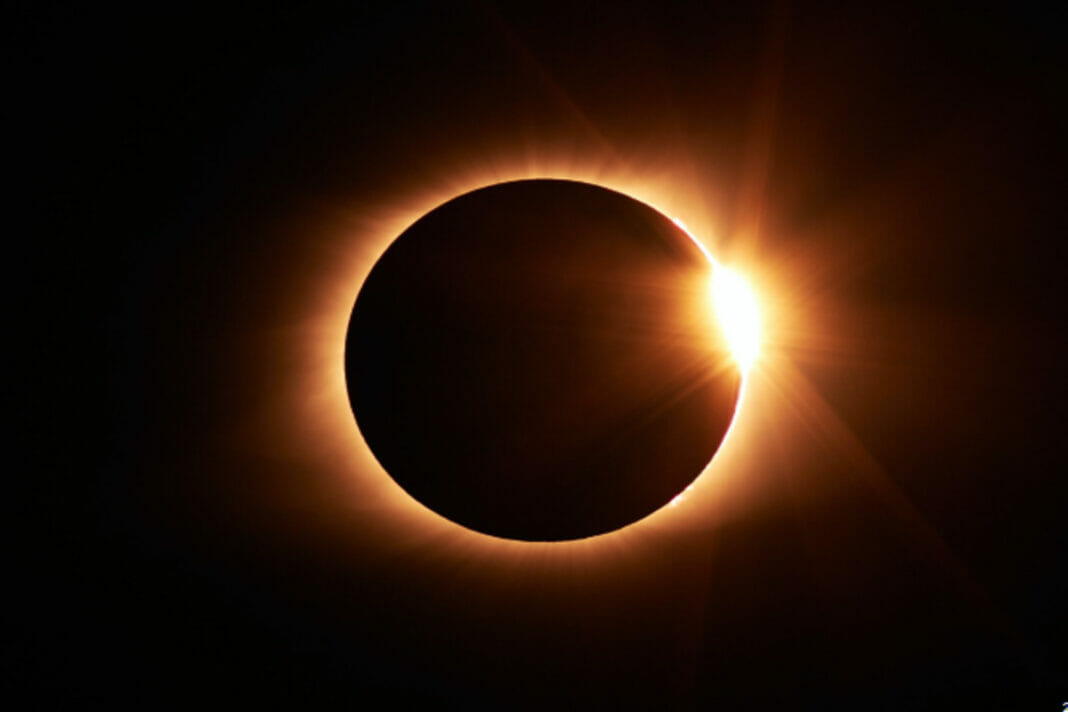Solar Eclipse 2023: On October 14, 2023, there will be a ‘ring of fire’ solar eclipse. Since the shadow the Moon casts on the Sun appears to be a golden ring around the Sun, this annular solar eclipse is also known as a “ring of fire.” The sole natural satellite of the Earth appears smaller than the Sun in the sky during an annular solar eclipse, which occurs when the Moon is far from the Earth. Although it partially obscures the Sun, the Moon appears as a dark disc above a brighter and bigger disc.
Annular Solar Eclipse 2023
At this point in its orbit around the Earth, the Moon is the furthest from the Sun and the Earth. The edge of the Sun is still discernible as a bright ring around the Moon during an annular solar eclipse. According to timeanddate.com, the annular solar eclipse of 2023 will be visible from the United States, as well as from areas of Central America, Brazil, Mexico, and Colombia. A partial solar eclipse will be visible to people who live outside the region that the Moon’s inner shadow will cover. West Africa, South America, and regions close to the Pacific, Atlantic, and Arctic oceans are some of these.
Where to Watch the ‘Ring of Fire’ and Its Phases on October 14, 2023
The ‘ring of fire’ solar eclipse will be observed in the US along a confined route from Texas to Oregon. In India, the annular solar eclipse won’t be seen. India residents can view it online, though. The annular solar eclipse will have a partial phase on October 14 at 20:33 IST, a full phase at 21:40 IST, a maximum phase at 23:29 IST, a full phase ending on October 15 at 1:19 IST, and a particle phase ending at 2:25 IST. This spectacle can be seen by many people in the Western Hemisphere.
NASA’s 3D Technology and YouTube Broadcast Have You Covered
Use NASA’s “Eyes On The Solar System” 3D interactive technology if you live somewhere where you can’t see the annular solar eclipse. To view the eclipse, one can click inside the window using a mouse or touchpad to interact with Earth. The NASA official YouTube channel will show the ‘ring of fire’ solar eclipse live.
Different phases of an annular solar eclipse?
Partial Eclipse
The Moon starts to move in front of the Sun during the partial eclipse phase, gradually beginning to obscure more and more of the Sun’s light. The Sun appears to get smaller and smaller as a result. The Sun eventually assumes a “C” shape after assuming a crescent shape. The first contact phase is the name of this step.
Annularity
About one hour and twenty minutes after the partial eclipse starts, the annularity phase starts. The Moon totally obscures the Sun during the annularity phase, creating a dazzling “ring”. The second contact phase is another name for this stage. It often lasts between one and five minutes. An annular solar eclipse causes the sky to darken, although not as much as a total eclipse. The Moon will cover the Sun to a degree of almost 90%.
Return to Partial Eclipse
Following the second contact phase, the Moon continues to orbit the Sun for another hour and a half and a half. The third contact stage is produced, which results in another partial eclipse phase.
End of Partial Eclipse
Until it is no longer overlapping the star’s disc, the Moon continues to move away from the Sun. This is referred to as the fourth contact phase and signifies the end of the eclipse.
Keep watching our YouTube Channel ‘DNP INDIA’. Also, please subscribe and follow us on FACEBOOK


